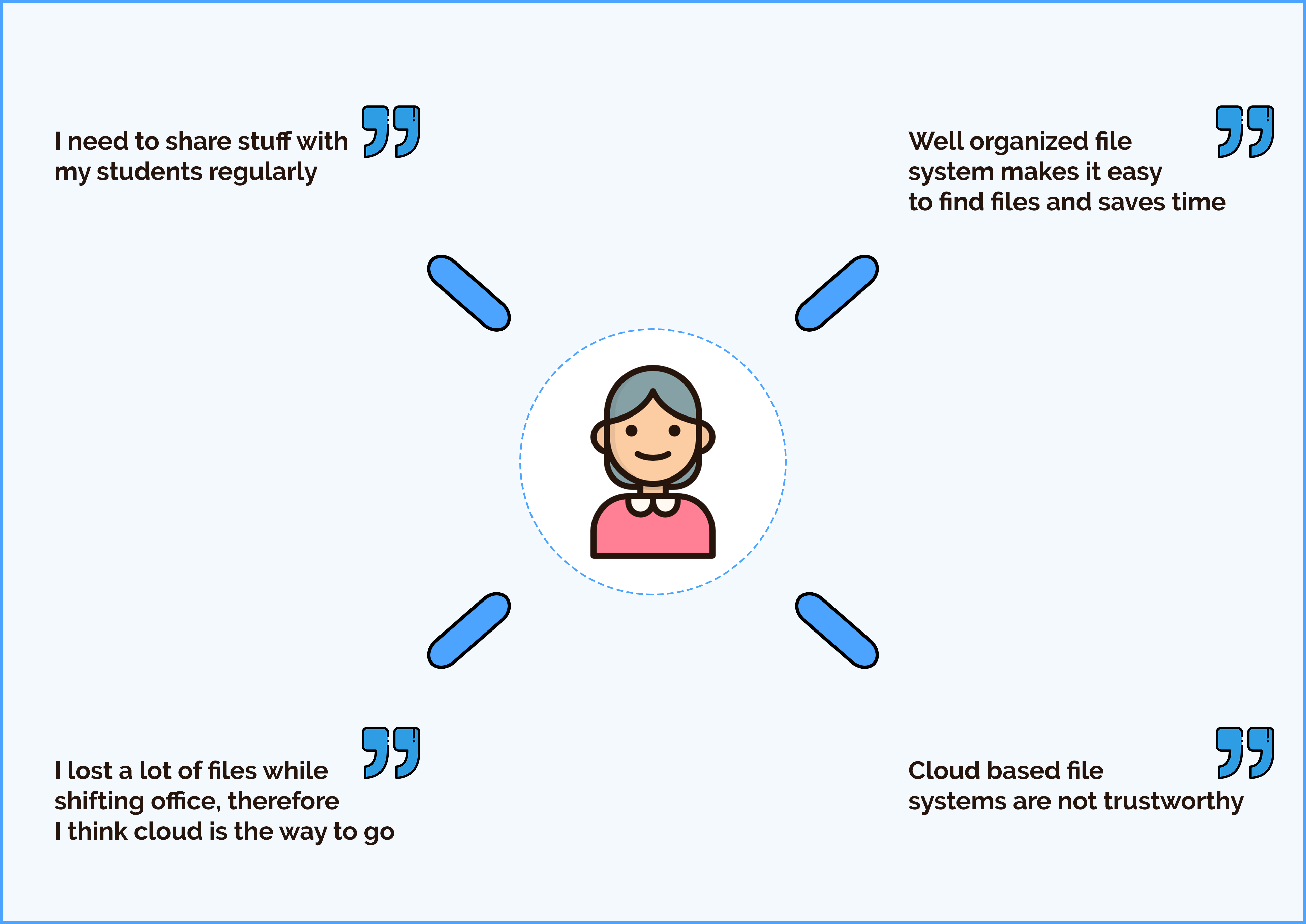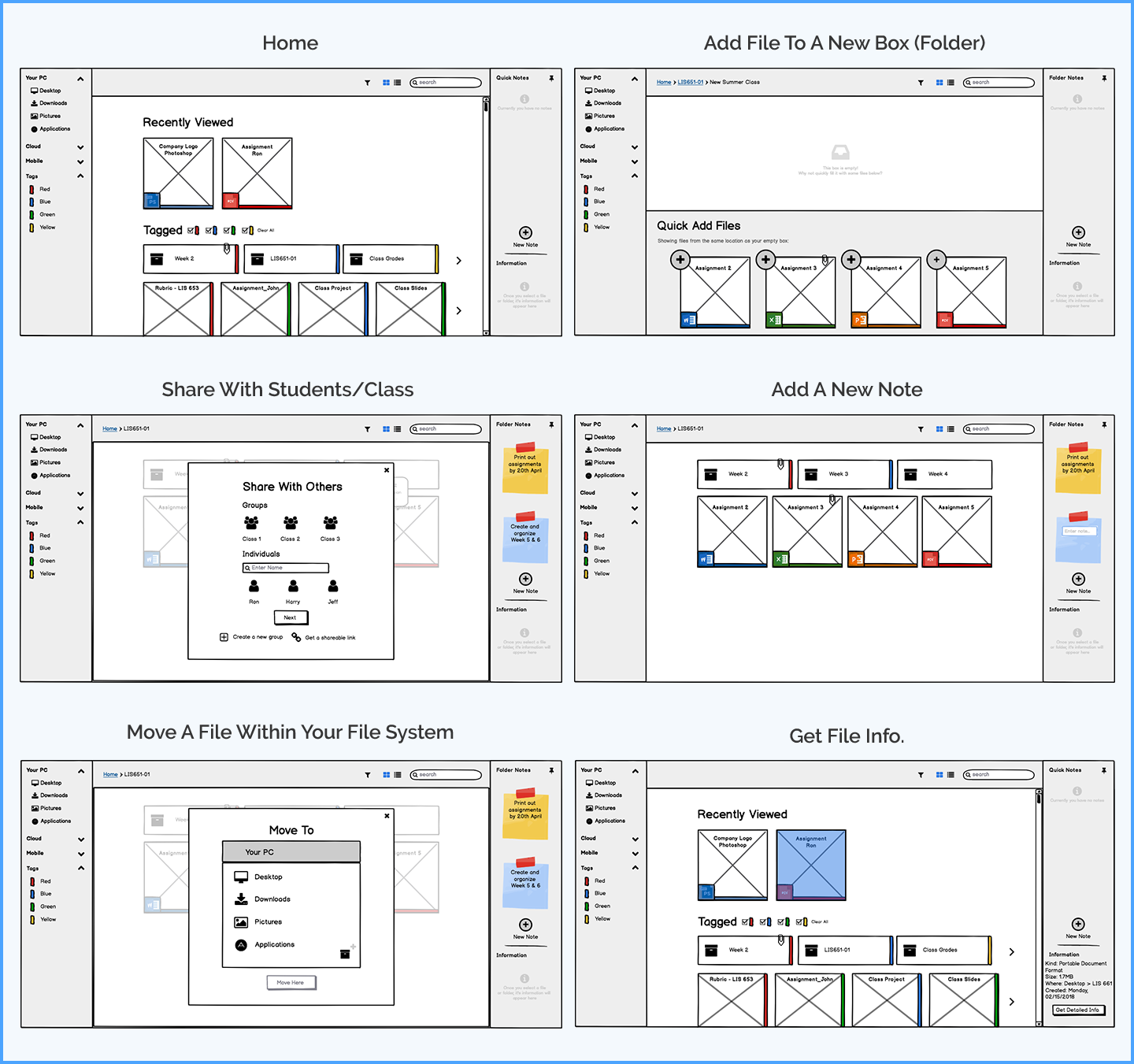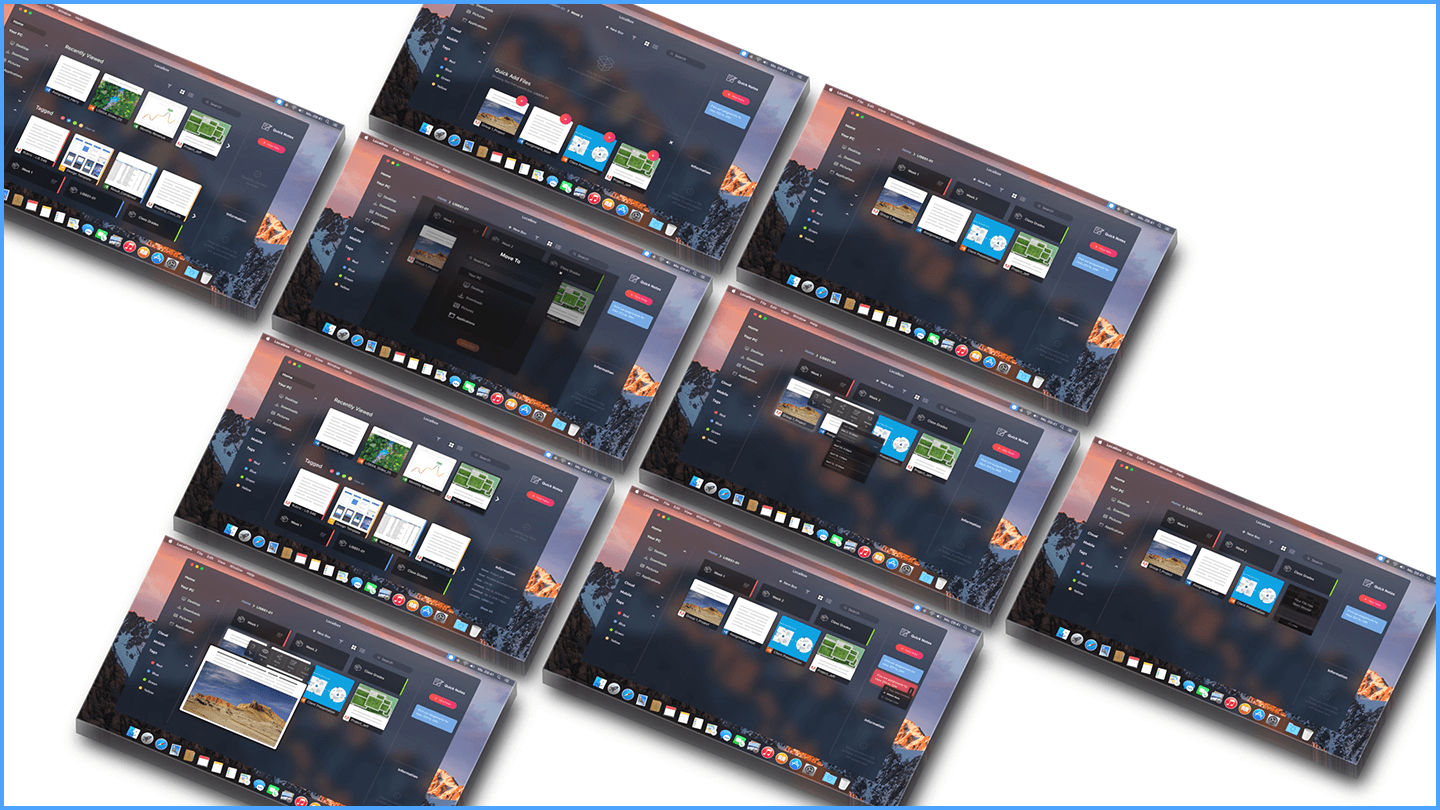Overview
About The Project
Overview: Localbox is a desktop based application that redefines the file organizing experience for graduate school professors. Professors deal with with tons of files every day and organizing files has always been a poor experience for them. Phases where users have to recollect where the file is and the process of retrieval creates frustration among the users.
To solve this problem, we designed Localbox that helps the professors in organizing their files in a better and a convenient way.
Discipline: UX/UI Design, User Research, Interaction Design, Prototyping, Project Management
Design Tools: Sketch, Photoshop, Balsamiq, Marvel
Research Methods: Interviews, Observation, User Testing
Duration: Spring 2018, 15 weeks






